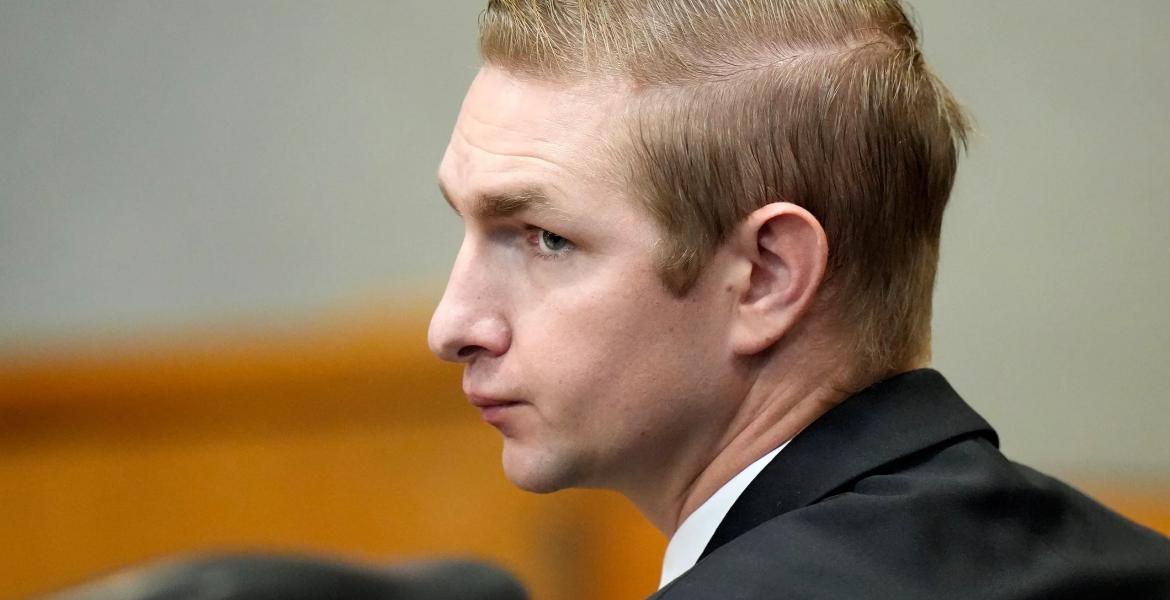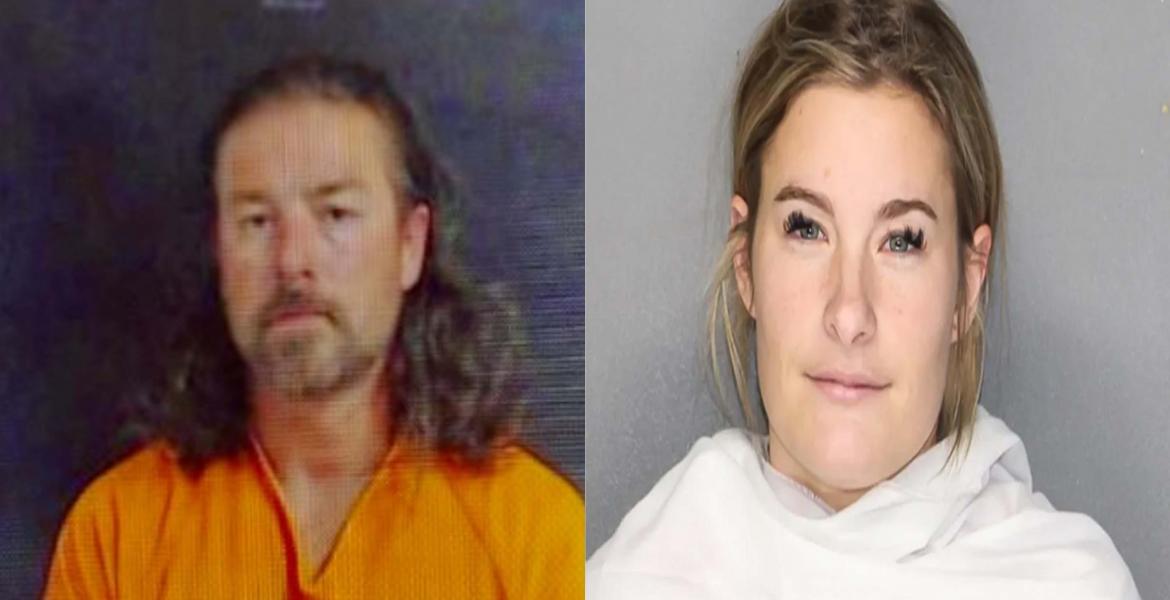SAN ANGELO, TX – Tuesday morning, the trial against Stephano Culbreath continued in Judge Ben Woodward’s courtroom. The morning hours were filled with state witnesses who spoke to Culbreath’s activities before he was arrested, and how authorities were able to locate and take him into custody.
The first witness on the stand was Monica Powell, who stated she had been with Culbreath in the early morning hours after the murder occurred. According to her testimony, she had been at a game room on Sherwood Way and asked Culbreath for a ride home at around 7 or 8 a.m. At that time, she was living on 13th Street, and when Culbreath drove her home, they passed through the scene of where the crime had taken place. She stated that she had told Culbreath to drive past it because it didn’t make sense to drive around the street.
As District Attorney Allison Palmer continued to question Powell, she asked the witness if she had changed her testimony regarding what the Defendant may have said that morning in the vehicle. Powell responded that she and Culbreath have not spoken about what he had done previously because they didn’t know each other.
“Why would I ask him about the night before?” Powell asked.
She testified that when they passed the scene, she had slouched down in her seat because there was a warrant out for her arrest. Powell is currently in the custody of the Tom Green County Jail.
The second witness, Barry Baty, testified being with Culbreath for a couple of minutes at around 1 or 2 a.m. that same night. Baty testified before the court, outside of the presence of the jury, and the judge determined that D.A. Palmer could not ask any questions regarding a possible drug deal that had occurred. After the jury came back, Baty testified that, on the night in question, the Defendant drove up in a Suburban. He got in and “they made the block.” He also stated he had no relationship with Culbreath.
Baty added that he and Culbreath stopped in front of a house where the Mathis twins lived, and one of them was in the yard. She then approached the vehicle and asked them if they had heard a gunshot, to which they both responded they hadn’t. Afterwards, Culbreath drove Baty back to the same place where he had picked him up. Palmer questioned if, at any point on that night, he had heard any gunshots, to which he replied, “Like I told you and the authorities, I didn’t hear anything.”
Baty was also questioned regarding the time frame in which the interaction had happened, and he stated it was either 1 or 2 a.m. and not 4 or 5 a.m. as the D.A was suggesting.
The next witness was Clifford White, who had been with Baty the night of the incident. He testified to seeing Baty get in the car and come back a couple of minutes later. He had never met the Defendant, nor did he have any prior relationship with him.
Sergeant Antoine Callum took the stand as well. He testified that, as the investigation continued, he was told to locate Stephano Culbreath. Using a picture provided by one of the detectives, he attempted to locate the suspect by relying on contacts and people who might know who he was and where he was located. Dressed in plain clothes and in an unmarked car, Callum was able to locate the suspect, and when Culbreath exited the residence, officers approached the scene and asked him to lay down on the ground while they had drawn their weapons. After conducting a routine pat down, Culbreath was placed under the custody of Officer Espinoza, who had a squad car with the capabilities to transport the suspect safely. He recalled that the suspect was sweating profusely, and when they had searched his home, they had not found a weapon.
Detective McGee took the stand after the sergeant and described his involvement in apprehending Culbreath as a suspect in the murder of David Titus. He was instructed to place Culbreath’s home under surveillance. He said he remembers seeing a maroon Suburban pulling into the residence with a small red-gray truck behind it. After he reached behind to get to his bullet proof vest, the small truck was gone. After approaching Culbreath’s residence, and with the authorization of Nancy Walker, who was at the home at the time, he searched for Culbreath. After not finding him in the residence, McGee informed Detective Chapa and they proceeded to try to locate the small pickup truck. After this is when Sergeant Callum located the suspect in another residence.
Skinner also questioned McGee regarding the search procedure that Officer Espinoza had conducted when Culbreath was placed in his custody. McGee stated that he had not seen the search, but, based on the pictures the Defense entered into evidence, it appeared the procedure was done as in any search instance. He also stated that Clubreath appeared to be sweating a lot.
After the jury was excused, Justin Ray Rodela was called to the stand, which was a surprise to everyone, including Judge Woodward. D.A. Palmer stated before the court that Rodela was willing to testify as long as he was not asked any questions regarding the pending possession charge he currently has. Rodela was charged with drug possession after officers were dispatched to locate him in order to serve a subpoena and he was found with a controlled substance. His defense attorney was present to ensure that Rodela was not asked any questions that could be incriminating to his client. For that ordeal, please click here.
Skinner objected stating that Rodela's testimony could confuse the jury even more, and Palmer argued that they needed the witness to make sure the jury wasn't confused. The witness proceeded. Rodela stated that he had seen the victim, David Titus, late that night. He said Titus had been looking for drugs when he saw him, and indicated that he was “wired” and looking for meth. He estimates he spent an hour with Titus, who he called his “best friend.”
Contrary to what he appeared to have told D.A Palmer, Rodela had never introduced Culbreath to Titus, nor did he have any personal knowledge that they had ever been in the same place at the same time. After all of the legal arguing regarding the validity of his testimony on Tuesday morning, Rodela was not called to the witness stand that afternoon. In today’s court proceedings, Judge Woodward did not allow Rodela's testimony to be presented before the jury.
As for afternoon witnesses, Jessica Stevens, with SAPD Crime Scene Investigations Division, took the stand. She described the murder scene on 13th and MLK to the jury and identified the blood splotches around Titus' body. She explained that crime scene technicians are trained to take long-range, medium and close-up shots of the crime scene.
Stevens also identified the crime scene video, which started with the street signs, and walked the viewers through the investigation. The highlights included the victim’s body with the blood splotches surrounding it, the bicycle the victim was riding, and the tire marks going through the crime scene.
She said a close-up photo was taken to show the right peddle of the bicycle with the red paint transfer on it. She also showed the jury the rear bike tire that was collected from the crime scene. It was identified as the tire from the murder because of the rupture in the tire.
Stevens took the photos and identified all of the evidence to the jury.
The hands of Titus where shown to be bloody in the photos. She said the photos also showed what appeared to be two bullet holes in the back of the victim’s neck.
She identified in her report that a necklace could be seen as “broken” near the body. Skinner asked why she thought it was broken when it was actually still intact. Stevens replied, “I assume so, but I thought it was broken at the time.”
When asked how much experience she had with the SAPD at the time of the murder, Stevens said it would have been less than a year.
Also, there was a nearby traffic cone on the scene in the video, and Stevens picked it up to reveal a casing of bullet on the ground. She then proceeded to pick up the bullet and exam it for a few frames of the video.
Stevens spoke of her accounts after the crime scene investigation where she went to collect the unused bullet from behind the stove at 3205 Groves Circle. Stevens and three other crime scene investigators searched the kitchen for the bullet hole that Culbreath claimed was in that area of the house. After an “extensive” search, a bullet hole couldn’t be located," she said.
The next witness was Richard Espinosa, a SAPD Patrol Officer. He was told to collect and transfer Culbreath from the location where he was apprehended. He moved Culbreath to the front of his marked patrol car and performed a secondary search of his person. Espinosa stated this was standard procedure before transferring anyone in a vehicle.
A series of photos was shown to the jury of the evidence the Defendant had on him at the time of the arrest. Espinosa identified the contents of the plastic bag used to collect the evidence. He also identified the Defendant’s phone and the cigarette packets he had on his person.
Skinner asked if Espinosa had worn gloves during this search, which he replied he hadn’t. She also inquired if he practiced with his firearm training frequently during that time. He said he keeps up with firearm qualifications annually, and would practice at least once a month in that time frame.
Espinosa also said, after searching Culbreath, he waited for instructions from detectives before transporting him to the police department.
When he was passed back to the State for questioning, Palmer asked Espinosa if he had any knowledge of having gunshot residue on his person during the search of Culbreath’s pocket. Skinner objected to this under framing the question as speculation. Judge Woodward upheld the objection, so Palmer rephrased and asked if he had done anything that day to leave gunshot residue on his person. Espinosa stated he had not fired a gun that day.
The court was then called to recess and re-started at 10:30 a.m. this morning.
The reason for the long delay is Judge Woodward asked Skinner and Palmer to come to an agreement on the viewing of the discussion between Culbreath and the detectives at the police department. Judge Woodward said he understands there are credible objections to the video being shown to the jury. He said the detectives claim more than seven times that the paint transfer from the bicycle and the Defendant's Suburban places him at the scene. Culbreath, however, can be heard replying in the audio, “You aren’t going to pin this on me.”
“This video is relevant, but not credible,” Woodward said.
He asked the Defense not to waver its objection to showing the video, but asked the attorneys to help come to an agreement on what portions should be shown to the jury. Woodward noted the video is three to four hours long, which is already too long with the court's current pace.
“Ten or twenty minutes, and I’ve seen enough,” Woodward stated.
Skinner made sure the objection stands as the video will mention evidence that hasn’t been proven as credible at this point in the trial. She referenced specifically the meth found in Culbreath's vehicle during the search.
Woodward stated that, because the defendant acknowledged ownership in the interview, it is relevant evidence already.
“Hopefully, we can have a lot of these questions lined up,” Woodward concluded.
Cameron Niblock contributed to this article.
Subscribe to the LIVE! Daily
Required






Post a comment to this article here: